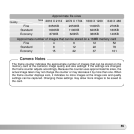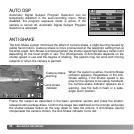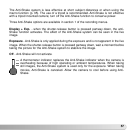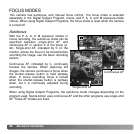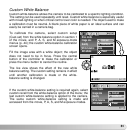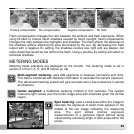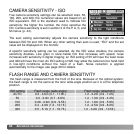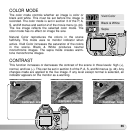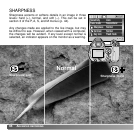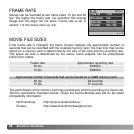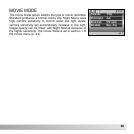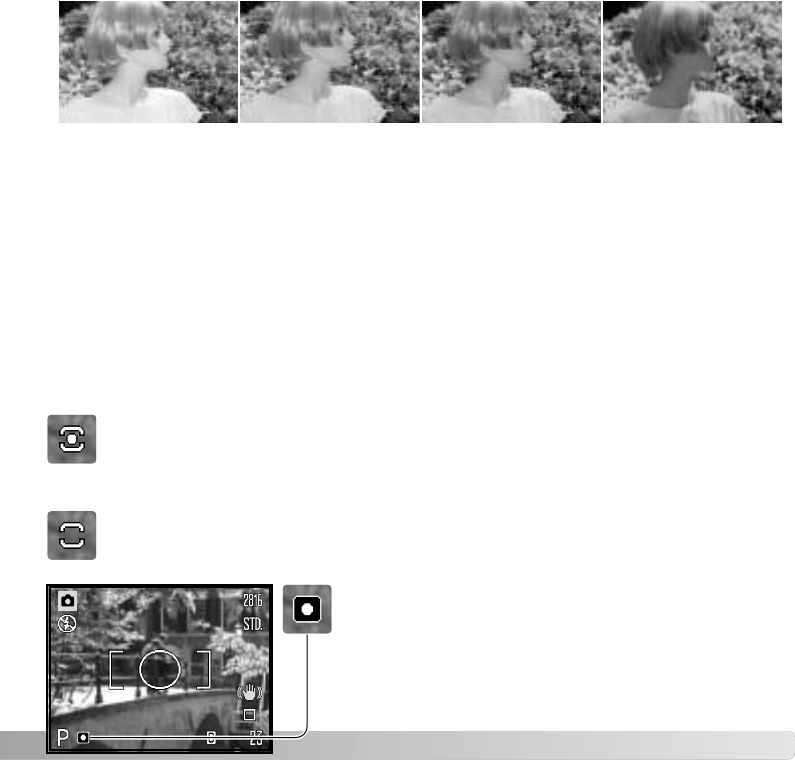
63
Flash compensation changes the ratio between the ambient and flash exposures. When
using fill-flash to reduce harsh shadows caused by direct sunlight, flash compensation
changes the ratio between the highlights and shadows. The flash affects the darkness of
the shadows without affecting the area illuminated by the sun. By decreasing the flash
output with a negative Ev setting, the shadows receive less light and are deeper, but
retain detail that would be lost without the flash. Using a positive Ev setting will soften or
eliminate shadows.
Center weighted: a traditional metering method in film cameras. The system
measures light values over the entire image area with emphasis given the central
region.
Spot metering: uses a small area within the image to
calculate the exposure. A small circle appears in the
middle of the live image indicating the measuring
area. The spot allows precise exposure
measurements of a particular object without being
influenced by extremely bright or dark areas within the
scene.
Multi-segment metering: uses 256 segments to measure luminance and color.
This data is combined with distance information to calculate the camera exposure.
This advanced metering system will give accurate worry-free exposures in almost
all situations.
Metering mode indicators are displayed on the monitor. The metering mode is set in
section 2 of the P, A, S, and M menus (p. 44).
METERING MODES
No compensation
Negative compensation
Positive compensation
No flash



